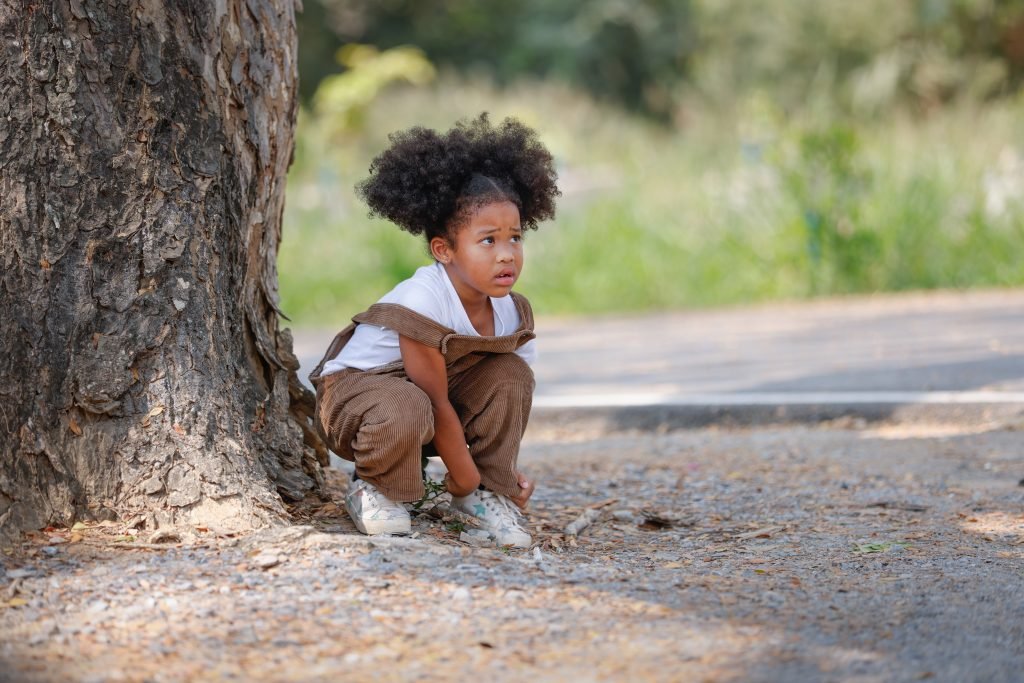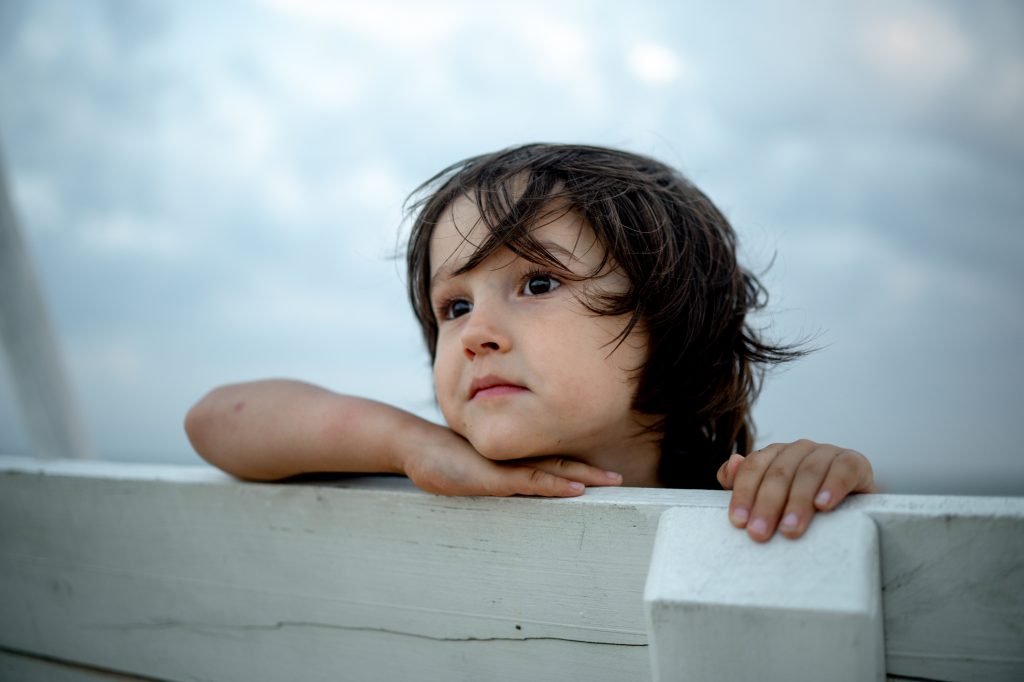As educators, we’ve all encountered a child often described as “shy” or “reserved.” This is just an easy label, a simple way to categorize a child who might not be as eager to jump into group activities or conversations. However, what if I told you that a child’s reserve is not a sign of being a shy child but rather a demonstration of profound powers of observation and discernment? In this exploration, we’ll uncover the value of allowing children the space to observe, appreciate the world around them, and participate in ways that are true to their nature.
The Destructive Power of the Shy Child Label
It’s all too easy to make quick judgments about a child’s behavior, especially in environments where a gregarious nature is prized. Whether it’s a bustling early childhood center or a lively outdoor play ecosystem, adult expectations often favor children who join in without hesitation.
Yet, these expectations can inadvertently stifle the qualities that define some of the most creative, empathetic, and perceptive children among us. My second child was always considered to be shy child. As an adult, she shared with me that she was not shy, she was taking time to evaluate every situation and decide when and how to approach it. Today, She is a perceptive and thoughtful adult.
Labels are convenient little packages – they house quick, superficial summaries of a person’s behavior, which unfortunately often sticks. The shy child label, for instance, carries with it implications of social inefficiency, underactive participation, and even a suggestion of a lesser personal value. It’s a subtle but unmistakable call for the child to change, to be something they might not be.
It is easy to forget that the shy child label is not necessarily accurate to the child but from a society that tends to value extroversion over introversion. Thus, the shy child is unwittingly moved into a narrative where the aim is not to nurture their strengths but to fix their ‘weaknesses’.
A New Perspective to Foster Growth Beyond the Shy Child Label
What if I were to suggest that the shy child is not so much in need of fixing as they are in need of understanding and proper support? I believe it’s time to rethink how we view shy children. Instead of seeing ‘shy’ as a personality flaw, we should view it as a unique approach to the world – one that deserves as much respect as any other and one that, when nurtured correctly, can bloom into a powerhouse of creativity and wisdom.
We must encourage educators and parents to see the value in the quiet ones—those who observe, consider, and reflect before they leap. Instead of labeling shy children, let us consider them deep thinkers. Once they’ve found their voice, they can contribute ideas rich in insight and compassion. We must create environments that celebrate their contributions instead of pushing them to conform to more ‘sociable’ behaviors.
The truth is that labels box us in. They reduce complex human experiences and personalities into static, one-dimensional identities. The shy child label is especially harmful because it limits a child’s self-efficacy and willingness to take risks and try new things. By questioning the shy child label, we open the door to a new perspective for children and their own understanding of their capabilities.
Instead of labeling, we should be having conversations about our image of children. We must spend time getting to know the individual complex beings behind the words. What do they love? What are they curious about? What makes their eyes light up? When we discover these things, we can create opportunities for these quiet stars to shine in their unique ways.
The Power of Reserved Reactions
Reserved children possess the invaluable skill of heightened observation. Their observant nature enables them to perceive nuances in social situations and human behavior. This can lead to a deeper understanding of the world and a more remarkable ability to empathize with others, essential qualities that are sometimes overshadowed by adult’s expectations. At the end, they may be more than the shy child label.
The Hidden Potential within Silent Watchers
Consider the quiet child who prefers to observe a game rather than actively participate. They aren’t disinterested; they absorb information, plan strategies, and consider their options. When they eventually engage, their approach is often strategic and thoughtful, which can lead to personal success and a positive impact on group dynamics.

Nurturing the Strengths of Observant Children
An essential part of our roles as educators of young children is to create ecosystems that nurture all children’s unique strengths. For the observing child, this means understanding and appreciating their need for space and time, creating spaces to reflect and ponder, and providing the time for them to step back and observe.
Allowing for Space in the Daily Schedule
Traditional educational settings often have rigid schedules and learning methods that may not cater to the needs of observant children. By incorporating more explorations to allow children to choose how and when to participate, we honor their natural inclinations and provide them with the space they need to thrive.
Recognizing Active Engagement in Silent Forms
It’s critical to broaden our definition of “engagement.” While interacting with peers and assuming leadership is an apparent sign of participation, we should also recognize thoughtful engagement behind the scenes. In these moments of reflection, ideas are formed, and understanding deepens, ready to be shared when the time suits the child. For example, a child who quietly listens to a conversation while playing alone may be capturing the nuances being shared and will share ideas when he has deducted what the nuances mean.
The Transformative Power of Shifting Perspectives From a Shy Child to an Observant Child
Setting aside our preconceived notions of participation opens the door to a new, more inclusive, and supportive way of teaching and guiding young children. This shift in perspective can transform how we interact with and encourage children.

The Ripple Effect of Understanding
When we take the time to understand and appreciate the reserved child’s perspective, we model empathy and inclusivity. This understanding ripples through the ecosystem, encouraging all children to recognize and value each other’s unique qualities.
Celebrating the Individual and the Collective
Every child contributes to the collective dynamism of a learning ecosystem. By celebrating the individual’s strengths and the collective contributions of a diverse group of learners, we create a culture of respect and appreciation that benefits every child, regardless of their natural inclinations.
The Journey to Confident Engagement
For the observing child, the path to confident engagement is a personal and ongoing process. It’s our task to guide them along this path, respect their process, and ensure they feel empowered to share their observations and insights in their own time and way.
Building Trust Through Supportive Ecosystems
Trust is the bedrock of confident engagement. By creating supportive and respectful ecosystems where children feel safe to express themselves, we help the observant child to realize the value of their contributions and the importance of their voice.
Fostering Peer Dynamics That Encourage Participation
Positive peer interactions play a pivotal role in the observant child’s journey. When group settings are characterized by open communication, active listening, and the encouragement of all voices, observant children feel more motivated to participate and share their unique perspectives.
Case Studies: Real-Life Impacts of Observant Children
To illustrate the profound impact of reserving judgment and creating supportive environments for observant children, we look to personal stories and case studies illuminating these approaches’ transformative power.
The Tale of Two Classrooms
For example, the dynamics were markedly different in two early childhood ecosystems with similar demographics. In the first ecosystem, educators consciously made space for quiet children to contribute at their own pace, leading to a classroom full of engaged and thoughtful learners who listen and value each other’s ideas.
Meanwhile, the second classroom, where participation expectations were rigidly enforced, saw a divide between those who spoke out and those who chose to stay silent, leading to a less inclusive and dynamic learning environment. Thus creating a disconnect between children and interfering with community building.
Personal Testimonies of Growth and Recognition
Through the reflective learning environment provided by their preschool, quieter children have voiced newfound confidence, even taking the lead when they feel passionate about a subject. In another instance, an observant child’s recommendations for an art project were implemented, leading to a sense of pride and inclusion that transformed their attitude toward participation.

Shifting Our Narrative from a Shy Child to an Observant Child
To shift the narrative, we need to shift our language. Instead of saying, “She is a shy child,” we can acknowledge a child’s preference for one-on-one interactions, thoughtfulness, and sensitivity. This new language is not about avoiding the term ‘shy’ but infusing it with richer, more accurate meaning. It’s about recognizing that children, like adults, have diverse ways of being in the world, and all have the potential to thrive in their authenticity.
The Challenge Ahead – Changing the Shy Child Label
The challenge is one of perception and patience. It requires us as a society to value quiet strengths alongside extroverted ones and for educators to be given the support to adjust their methodologies. We need to empower these ‘shy’ children, not by trying to change them but by helping them understand the unique value that they bring.
We all have a role to play in this paradigm shift – parents, teachers, and society. We must recognize that the world needs diversity, not homogeneity and that the quiet ones often teach us the loudest lessons. It’s time to redefine labeling to support better children’s authentic engagement with the world around them.
By fostering environments that allow for various forms of interaction and expression, we break down the walls that labels build and create a space where every child can be valued exactly as they are. It’s a worthwhile endeavor that can lead to a more inclusive and compassionate future—one conversation, one child at a time. After all, every voice has a right to be heard, and every soul, however quiet, has a world to share.

How have you shifted your view from labeling a shy child to seeing a child who observes, reflects and makes decision when they are ready?
How do you support children who observe and assess different situations before participating?